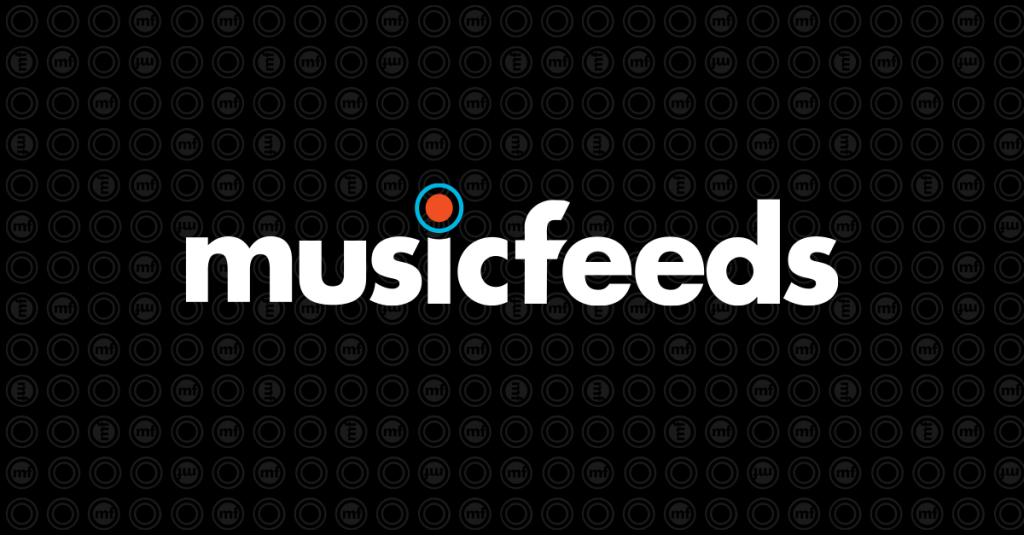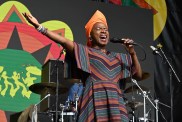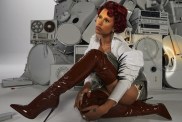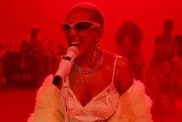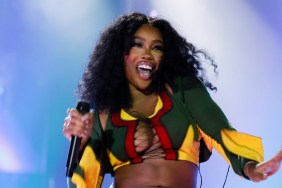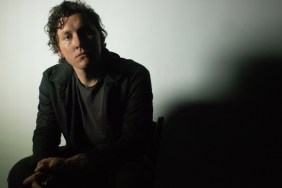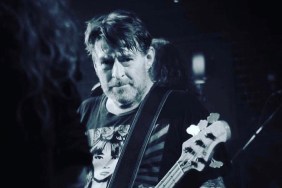New recruit Ned Green let’s his slippery digits fly in his new weekly column Ned Heckling The Band focussing on Jazz and whatever else is rattling round his tightly wound head.
So I’ve got to write this column on jazz right? But I’m only eighteen and just finished school, so while I’ve been playing jazz (albeit rather poorly) for going on five years now, when I was told by our ever-enthusiastic editor Sir Michael Carr to write a jazz column, well, I realised that I had no idea what to say. Yet as time went on and I kept ignoring my responsibility to write something, it came to my attention that unlike most of Sydney’s youth my age, I think jazz is cool. There, I said it. I listen to nearly all forms of music, and truthfully I think it’s very hard to go past a great jazz song. In fact, I would rather listen to jazz than most of the crap on the radio nowadays (I refer to The Climb by Miley Cyrus and Linkin Park’s latest repetitive re-do of a song they’ve already written New Divide, both of which are in ARIA’s top 10), but hey, I haven’t had a girlfriend for over a year, so what do I know about cool?
Jazz’s obvious lack of popularity amongst the younger generations – you – is an interesting development. It seems the only teenagers into jazz are those who either play it or those who are labeled ‘nerds’. This is ridiculous. Take a walk down memory lane and you’ll find that from the beginnings of ‘popular jazz’, circa 1920, there was nothing cooler than being involved with jazz music. In these now seemingly forgotten eras it was the jazz swing big bands that played the dance music danced to by the cool. Perhaps jazz’s movement towards increased complexity, to becoming more of a ‘musicians music’, (I stole that little quote from Wikipedia. How’s that for research!) has resulted in its loss of popularity. This however puzzles me – wouldn’t the numerous sub-genres of jazz that have developed over the 80-odd years of its existence allow for jazz to have something for everybody? Apparently not, as with the exception of the odd Michael Bublé album and David Campbell (God bless him, he’s trying) appearance on Sunrise, Jazz just can’t seem to break through to any sort of mainstream success with the younger generations, and it isn’t the lack of marketing to this audience that is forcing this, as I almost guarantee you that you wouldn’t buy a jazz CD even if its images were plastered all over the bus on your way home from school.
Therefore, during my slow emotional deterioration as I watch Australia lose the ashes to a horrible English cricket side, I have decided that jazz’s lack of popularity is due to young people’s lack of respect towards a form of art that actually requires talent as it is deemed not ‘cool’ enough. What better way to rant about such a problem, whilst offering a tribute to one of my favourite jazz musicians – Jaco Pastorius – than this column? Fantastic! I feel that today’s youth are more interested in giving their money to an artist who is either physically attractive or ‘cool’ than to one who actually sells ‘music’. This dismays me as I thought the whole point of record sales was to promote the best music, and I just don’t think Pink writes the best music available today. As a result of this ‘failure of the system’ I have come to the conclusion that when it comes to mainstream music, the image behind the music dictates predominantly the eventual popularity of the resulting CD.
I feel that this obsession with ‘image’ also comes into play with music categorized under the ever-widening heading of “indie”. Now, let me set the record straight: I like indie music. I do. But honestly, any fan of indie music can’t honestly tell me that image doesn’t play a huge part in their decision whether or not to buy a CD. As you sit there nay-saying me, use this image as an example: would you buy a Vampire Weekend CD if they dressed like Van Halen? No, don’t lie to yourself; you wouldn’t. This ridiculous obsession with the image of rockstars nowadays is obscenely out of control and I feel it is stopping people from enjoying the true diversity and wonder of music.
One such image that seems to be universally popular is that of the self-destructive musician living a life of sin and disregard for their health and the authorities. The ever-present popularity of such a character has forced me to do what desperately needs to be done: a character comparison. I’m going to describe to you two characters, and I want you, the reader, to make up your own mind about who is cooler.
Man A: Very successful at school, getting eleven top GSCEs, four top A levels and an offer from Oxford University. During his final days at school he got a job as a gravedigger but would spend most of his time sitting on the tombstones reading and writing. He studied English at university but dropped out after one year and began playing music. He has played guitar in two bands (singing in one of them) and is currently performing solo – He has appeared on seven albums with three of them being UK top 10s. He also writes journals, paints and occasionally models. Whilst he is known for his musical talent, he is perhaps best known for his personal and public life: He is bisexual, but has had many highly publicized relationships, including being engaged to a model and dating another one very publicly. He is a well-known drug addict (despite once swearing to never use them), specifically heroin and cocaine, who has entered rehab numerous times. He was kicked out of his first successful band due to burgling the lead singer’s house – he was sentenced to 6 months in prison but only served 2. He is currently 30 years old.
Man B: Had a largely uneventful childhood, originating as a drummer but forced to take up bass guitar due to injury. Played in a number of bands but was offered a solo album. This debut has gone on to become known widely as one of the greatest bass guitar albums ever recorded. Claimed to be the ‘greatest bass player in the world’ and was eventually accepted into his most well-known musical project, taking them to never-before seen heights and being called “the greatest thing to ever happen to the band”. He once played a one-and-a-half hour solo concert where he “lay on the floor and played his bass above his head. He stood up and did flips off the instrument. He slammed his bass to the floor and walked offstage while the guitar reverberated with a sound that went beyond noise into music.” He has appeared on 38 CDs. He also had a tumultuous personal life: He was married twice. He suffered from bipolar disease and had a well-known problem with alcohol and drug abuse. Eventually, his chronic substance abuse, particularly alcohol, led to the severe degeneration of his psyche. Various run-ins with the law included: being arrested many times for being drunk and disorderly, for resisting arrest, for stealing patron’s drinks and change at jazz clubs, for driving a stolen car around a running track, for breaking into an unoccupied apartment to sleep and for riding naked on the hood on a pickup truck. One night, after sneaking on stage at a Santana gig and being ejected, he went to a bar. After being refused entry due to being overly-intoxicated, he attempted to kick in the door of the club and confronted the bouncer. As a result of this confrontation, he was knocked unconscious; suffering from multiple facial-fractures and bruising and irreversible brain-damage. He died days later, aged 35, without ever regaining consciousness. He is widely considered to be the greatest bass player of all time and in 2006 Bass Guitar Magazine voted him “The Greatest Bass Player who has Ever Lived”.
Both these men are the epitome of the self-destructive musician. However, in my mind, if I had to choose between man A and B, surely the latter is a ‘cooler’ choice. There is nothing cool about an obviously intelligent man slowly descending into a junkie lifestyle – it is a sign of immense mental weakness. The character that I am discussing is Pete Doherty, current frontman of Babyshambles and the majority of the UK’s gossip magazines. Compare this largely pathetic junkie lifestyle to that of the second character – famed jazz bassist Jaco Pastorius. Pastorius lived a short, wild life involving almost constant ‘rockstar-like behavior’. He suffered from a mental disease which resulted in him completely mastering his craft and slowly degenerating into a suicidal alcoholic. This truly rockstar-esque lifestyle is surely ‘cooler’ than that of Doherty.
Now that we have established that Pastorius fits all the criteria for today’s young people to consider him cool, one must look at his music. Pastorius’ work in famed jazz band Weather Report is well-known to be sublime. However, I feel that some of his finest work is in his debut solo album titled Jaco Pastorius. Released in August 1976, Jaco Pastorius can undoubtedly be considered one of the greatest jazz albums of all time. Only 24 when released, this album is one of those albums where every track can be considered a hit. Opening with the bebop jazz standard Donna Lee Pastorius treats the listener to a semi-quaver driven, harmonics-laced melody which screams of virtuosity. Picking up the pace, Pastorius moves onto the funk tune Come on, Come Over, treating us to one of the catchiest bass-lines of all time. The album moves through an eclectic mix of songwriting – a testament to Pastorius’ musical maturity at such a young age. Literally every track jumps out at the listener as a stand-out. Continuum is a space-age track that is well before its time. Kuru/Speak Like A Child moves back to Pastorius’ funk ability as he monsters his way through both rapid-fire and relaxed bass-lines as Jazz greats Herbie Hancock and Don Alias trade breathtaking solos. The string orchestration is also one that warrants great applause. Opus Pocus is a steel-drum driven groove-athon, whilst the virtuosic Okonkole Y Trompa further showcases Pastorius’ talents amid instruments such as a French horn, further testament to his unique song-writing ability. (Used To Be A) Cha Cha offers the listener one of the best bass solos you’ll ever have the privilege of listening to, whilst Forgotten Love ends the album amid a mysterious sea of strings. The re-mastered version offers the listener two more tracks; a previously unreleased version of (Used To Be A) Cha Cha and drumming showcase 6/4 Jam. However, amongst this mix of brilliance, Jaco Pastorius’ finest moment is in a 2:23 bass solo, titled Portrait of Tracy. This harmonics-driven piece is softly-spoken and surely sets the benchmark for any bass guitarist to test their true ability. It is utter magic. Such is the brilliance of this album, a mixture of all forms of jazz, that Pastorius’ early demise seems all the more tragic and this album serves as the ultimate reminder of what is truly ‘cool’.
Click here to buy Jaco’s music on ![]()
Upcoming Jazz Events
Friday 24th July, 8:30pm – 11pm
Phillip Johnston’s Page of Madness Band @ The Sound Lounge. Tix $18/$14/$12 @ tix@thesoundlounge.com.au or at the door if not sold out.
Saturday 25th July, 8:30pm – 11pm
Andrew Robson Trio + Jess Green Trio @ The Sound Lounge. Tix $18/$14/$12 @ tix@thesoundlounge.com.au or at the door if not sold out.
Every Wednesday Night @ 7:30pm
Marsala @ QIRKZ, Marrickville. Tix $25 admission, $20 concession, $15 for kids under 15.
